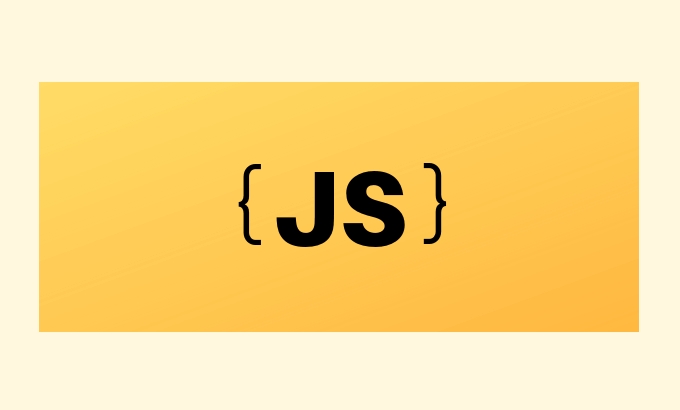Performing Background Tasks with Javascript Web Workers
Jul 09, 2025 am 02:21 AMJavaScript Web Workers are key technologies to improve web page performance and prevent interface lag. It avoids blocking the main thread by creating background threads to perform complex computing tasks, such as data processing, image operations, and encryption and decryption, and thus keeps the page responsive to user interaction. The steps to using Web Workers include: 1. Write a Worker script file; 2. Load the script through new Worker() in the main thread. The communication method is: send messages through postMessage(), and onmessage receives messages, but the transmitted data will be serialized and cannot contain functions or special types. Optimization suggestions include: reuse Worker instances, avoid handling small tasks, pay attention to data transfer performance, and simplify the call process in large projects with Comlink.

JavaScript Web Workers is one of the key tools to solve page stuttering and improve user experience. If your web page needs to perform a large number of computational tasks, such as data processing, image operations or real-time algorithm operations, running these codes directly on the main thread will cause the interface to freeze and users cannot interact. Web Workers provides a multi-threading mechanism that allows you to "thrown" time-consuming tasks into the background for processing.

What are JavaScript Web Workers?
Simply put, Web Worker is a standalone thread running in the browser background. It communicates through messages with the main thread and does not interfere with each other. This means that you can execute complex logic in Worker without affecting page rendering or responding to user actions.

It should be noted that Worker does not have permission to access the DOM and cannot operate any elements on the page. Its original design is to handle pure computing tasks.
Common usage scenarios include:

- Large amounts of data sorting or filtering
- Image pixel processing (such as filters)
- Encryption and decryption operation
- AI computing in the game
How to create a Web Worker?
Creating a Worker is very simple, with only two steps: Write a separate JS file as the Worker script, and then load it in the main script.
Start Worker in the main thread
const worker = new Worker('worker.js');
Listening to messages in worker.js
onmessage = function(e) {
console.log('Data received:', e.data);
// Perform complex calculation const result = heavyComputation(e.data);
postMessage(result);
} Send messages between the main thread and the Worker through postMessage() and receive messages using onmessage . Communication between them is replication rather than sharing, so pay attention to performance when passing big data.
How to communicate with Worker?
The communication method is simple, but there are several details that are easy to ignore:
- The transmitted data will be serialized, so it cannot contain special types such as functions and undefined.
- If the object is passed, the Worker receives a copy, not a reference
-
Transferable Objectscan be used to improve the efficiency of large-block data transmission, such asArrayBuffer
For example, you want Worker to do a Fibonacci sequence calculation:
The main thread sends:
worker.postMessage(40);
Worker receives and returns the result:
onmessage = function(e) {
const n = e.data;
function fib(n) {
return n <= 1 ? n : fib(n - 1) fib(n - 2);
}
postMessage(fib(n));
}The main thread listens for the returned message:
worker.onmessage = function(e) {
console.log('Computation result:', e.data);
}This completes a complete asynchronous calculation task.
Some notes and optimization suggestions
While Web Workers are powerful, there are some limitations and best practices:
- Don't create and destroy Workers frequently, you can reuse one instance to handle multiple tasks
- Worker itself does not support DOM operations, nor does it support certain browser APIs (such as
windowanddocument) - If the project uses module packaging tools (such as Webpack), it may be necessary to specifically configure how the Worker file is loaded
- For small tasks, the overhead of opening Worker may be higher than direct execution, and it should be evaluated reasonably
If the project is large, you can also consider using libraries like Comlink to simplify the use of Worker, making calling Worker functions as convenient as calling ordinary functions.
Basically that's it. Web Workers are not complicated, but they are easily overlooked in actual development, especially in modern web applications that pursue high performance and smooth experience.
The above is the detailed content of Performing Background Tasks with Javascript Web Workers. For more information, please follow other related articles on the PHP Chinese website!

Hot AI Tools

Undress AI Tool
Undress images for free

Undresser.AI Undress
AI-powered app for creating realistic nude photos

AI Clothes Remover
Online AI tool for removing clothes from photos.

Clothoff.io
AI clothes remover

Video Face Swap
Swap faces in any video effortlessly with our completely free AI face swap tool!

Hot Article

Hot Tools

Notepad++7.3.1
Easy-to-use and free code editor

SublimeText3 Chinese version
Chinese version, very easy to use

Zend Studio 13.0.1
Powerful PHP integrated development environment

Dreamweaver CS6
Visual web development tools

SublimeText3 Mac version
God-level code editing software (SublimeText3)
 How does garbage collection work in JavaScript?
Jul 04, 2025 am 12:42 AM
How does garbage collection work in JavaScript?
Jul 04, 2025 am 12:42 AM
JavaScript's garbage collection mechanism automatically manages memory through a tag-clearing algorithm to reduce the risk of memory leakage. The engine traverses and marks the active object from the root object, and unmarked is treated as garbage and cleared. For example, when the object is no longer referenced (such as setting the variable to null), it will be released in the next round of recycling. Common causes of memory leaks include: ① Uncleared timers or event listeners; ② References to external variables in closures; ③ Global variables continue to hold a large amount of data. The V8 engine optimizes recycling efficiency through strategies such as generational recycling, incremental marking, parallel/concurrent recycling, and reduces the main thread blocking time. During development, unnecessary global references should be avoided and object associations should be promptly decorated to improve performance and stability.
 How to make an HTTP request in Node.js?
Jul 13, 2025 am 02:18 AM
How to make an HTTP request in Node.js?
Jul 13, 2025 am 02:18 AM
There are three common ways to initiate HTTP requests in Node.js: use built-in modules, axios, and node-fetch. 1. Use the built-in http/https module without dependencies, which is suitable for basic scenarios, but requires manual processing of data stitching and error monitoring, such as using https.get() to obtain data or send POST requests through .write(); 2.axios is a third-party library based on Promise. It has concise syntax and powerful functions, supports async/await, automatic JSON conversion, interceptor, etc. It is recommended to simplify asynchronous request operations; 3.node-fetch provides a style similar to browser fetch, based on Promise and simple syntax
 JavaScript Data Types: Primitive vs Reference
Jul 13, 2025 am 02:43 AM
JavaScript Data Types: Primitive vs Reference
Jul 13, 2025 am 02:43 AM
JavaScript data types are divided into primitive types and reference types. Primitive types include string, number, boolean, null, undefined, and symbol. The values are immutable and copies are copied when assigning values, so they do not affect each other; reference types such as objects, arrays and functions store memory addresses, and variables pointing to the same object will affect each other. Typeof and instanceof can be used to determine types, but pay attention to the historical issues of typeofnull. Understanding these two types of differences can help write more stable and reliable code.
 React vs Angular vs Vue: which js framework is best?
Jul 05, 2025 am 02:24 AM
React vs Angular vs Vue: which js framework is best?
Jul 05, 2025 am 02:24 AM
Which JavaScript framework is the best choice? The answer is to choose the most suitable one according to your needs. 1.React is flexible and free, suitable for medium and large projects that require high customization and team architecture capabilities; 2. Angular provides complete solutions, suitable for enterprise-level applications and long-term maintenance; 3. Vue is easy to use, suitable for small and medium-sized projects or rapid development. In addition, whether there is an existing technology stack, team size, project life cycle and whether SSR is needed are also important factors in choosing a framework. In short, there is no absolutely the best framework, the best choice is the one that suits your needs.
 JavaScript time object, someone builds an eactexe, faster website on Google Chrome, etc.
Jul 08, 2025 pm 02:27 PM
JavaScript time object, someone builds an eactexe, faster website on Google Chrome, etc.
Jul 08, 2025 pm 02:27 PM
Hello, JavaScript developers! Welcome to this week's JavaScript news! This week we will focus on: Oracle's trademark dispute with Deno, new JavaScript time objects are supported by browsers, Google Chrome updates, and some powerful developer tools. Let's get started! Oracle's trademark dispute with Deno Oracle's attempt to register a "JavaScript" trademark has caused controversy. Ryan Dahl, the creator of Node.js and Deno, has filed a petition to cancel the trademark, and he believes that JavaScript is an open standard and should not be used by Oracle
 Understanding Immediately Invoked Function Expressions (IIFE) in JavaScript
Jul 04, 2025 am 02:42 AM
Understanding Immediately Invoked Function Expressions (IIFE) in JavaScript
Jul 04, 2025 am 02:42 AM
IIFE (ImmediatelyInvokedFunctionExpression) is a function expression executed immediately after definition, used to isolate variables and avoid contaminating global scope. It is called by wrapping the function in parentheses to make it an expression and a pair of brackets immediately followed by it, such as (function(){/code/})();. Its core uses include: 1. Avoid variable conflicts and prevent duplication of naming between multiple scripts; 2. Create a private scope to make the internal variables invisible; 3. Modular code to facilitate initialization without exposing too many variables. Common writing methods include versions passed with parameters and versions of ES6 arrow function, but note that expressions and ties must be used.
 Handling Promises: Chaining, Error Handling, and Promise Combinators in JavaScript
Jul 08, 2025 am 02:40 AM
Handling Promises: Chaining, Error Handling, and Promise Combinators in JavaScript
Jul 08, 2025 am 02:40 AM
Promise is the core mechanism for handling asynchronous operations in JavaScript. Understanding chain calls, error handling and combiners is the key to mastering their applications. 1. The chain call returns a new Promise through .then() to realize asynchronous process concatenation. Each .then() receives the previous result and can return a value or a Promise; 2. Error handling should use .catch() to catch exceptions to avoid silent failures, and can return the default value in catch to continue the process; 3. Combinators such as Promise.all() (successfully successful only after all success), Promise.race() (the first completion is returned) and Promise.allSettled() (waiting for all completions)
 What is the cache API and how is it used with Service Workers?
Jul 08, 2025 am 02:43 AM
What is the cache API and how is it used with Service Workers?
Jul 08, 2025 am 02:43 AM
CacheAPI is a tool provided by the browser to cache network requests, which is often used in conjunction with ServiceWorker to improve website performance and offline experience. 1. It allows developers to manually store resources such as scripts, style sheets, pictures, etc.; 2. It can match cache responses according to requests; 3. It supports deleting specific caches or clearing the entire cache; 4. It can implement cache priority or network priority strategies through ServiceWorker listening to fetch events; 5. It is often used for offline support, speed up repeated access speed, preloading key resources and background update content; 6. When using it, you need to pay attention to cache version control, storage restrictions and the difference from HTTP caching mechanism.






